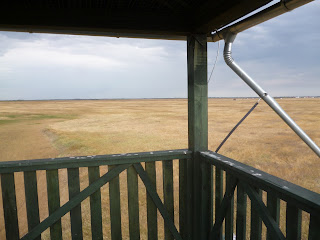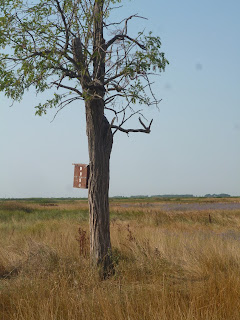We did as it was recommended in the Ramsar book and turned to an abandoned road from the paved way at the 17th km stone. All along the way we have spotted cranes and geese flying above our heads. This time of the year the Hortobágy National Park is full of those migrating wild birds. There is a festival or so to spot huge crane (Grus grus) flocks when they reach the peak numbers for the area.
Angyalháza is one of the main site for cranes to reside after foraging during day time. Abandoned stables and sties were around the site and it was very weird to see those buildings. During the dark 50s people from the cities were deported to those kind of establishment and forced to work for free etc. I'm not sure where were those "prisons" exactly but for now they are occupied by an other kind of inhabitants and those flying creatures chose to stay there not forced to.
I could not photographed it properly but there are plenty of wire alert all over the site. They supposed to divert birds from the electric poles I believe. It is widely necessary as there are plenty of accident for sure if the birds fly low.
The mud prevented us to proceed further nevertheless we did a big tour as there were paved roads almost until the Dög-erdő (a forest called beast). The road was a bit rough but still manageable even with a small car like ours!
Lone ranger?
Moss on the top to the abandoned sties. I'm not sure what kind of animal was there before but for sure we have seen plenty of sheep and their shepherd going around. Rough job with plenty of tradition. Food, instruments, customs and old stories came from those kind of people. Will this profession be disappearing or it depends on the current agricultural trends and national park politic?
Cranes (daru in Hungarian) in the distance. It is wonderful to listen to their calls. They are marvelous!

























































